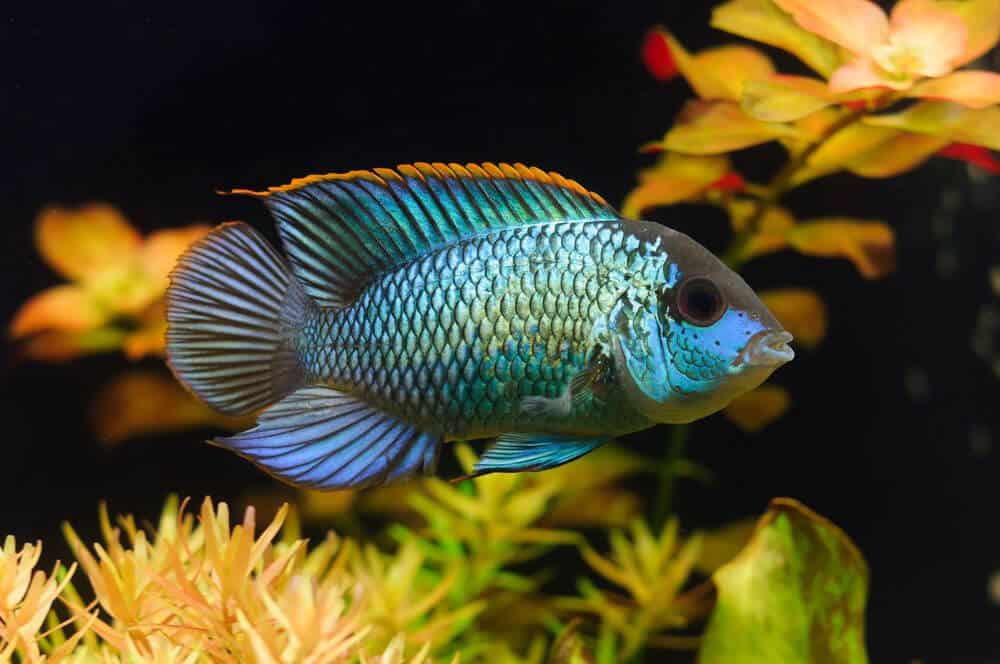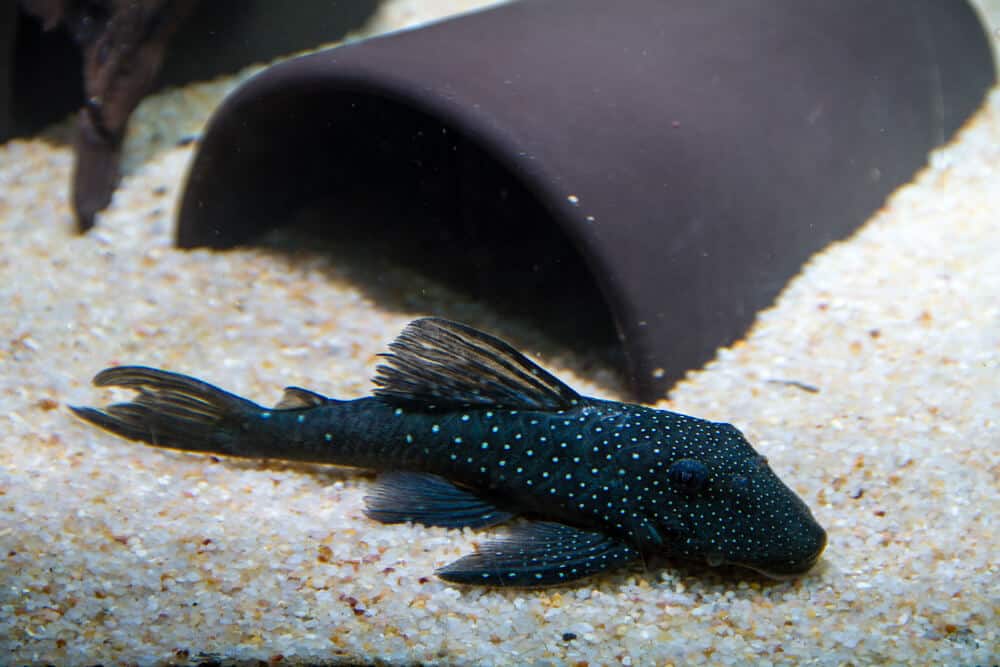The Ultimate Tiger Barb Species Profile: Behavior, Habitat and Care Tips

If you’re a fan of aquariums and looking to add a touch of exotic beauty to your collection, then the Tiger Barb might just be the perfect addition for you. With its striking black and orange striped pattern and playful nature, this fish is a captivating sight to behold. Not only is the Tiger Barb visually stunning, but it also possesses an intriguing behavior and social dynamics that make it an interesting species to observe and interact with. In this article, we will explore the fascinating characteristics of the Tiger Barb and uncover why it is a fantastic choice for any aquarium enthusiast.
Physical Description
The Tiger Barb (Puntigrus tetrazona) is a small, lively fish that boasts striking colors and distinctive markings. It has a streamlined body shape and can grow up to 3 inches in length, making it a perfect addition to medium-sized aquariums. The body of the Tiger Barb is elongated and slightly compressed, with a pointed snout and a forked caudal fin. Its body is covered in vibrant orange, black, and silver vertical stripes, which are responsible for its name. With its eye-catching appearance, the Tiger Barb is sure to stand out in any aquarium.
Natural Habitat
The Tiger Barb is native to the rivers and streams of Southeast Asia, specifically Thailand, Sumatra, and Borneo. In the wild, it can be found in densely vegetated areas with slow to moderate water currents. These habitats are typically warm and tropical, with temperatures ranging from 73 to 79 degrees Fahrenheit. The Tiger Barb is specifically adapted to these conditions and thrives in an aquatic environment with similar characteristics.
Behavior
Schooling
One of the most fascinating aspects of the Tiger Barb’s behavior is its tendency to form schools. In the wild, these fish live in large groups, which provides them with safety and makes them feel more comfortable. When kept in an aquarium, it is crucial to have a minimum of six Tiger Barbs in the school to mimic their natural behavior. By keeping them in a school, you can observe their synchronized swimming patterns and enjoy their active nature.
Aggression
While Tiger Barbs are generally peaceful fish, they can showcase some territorial behavior, especially when it comes to breeding. Males may become more aggressive during courtship, displaying nipping behavior towards other fish, including their own species. However, this aggression can be mitigated by providing ample space and hiding spots in the aquarium. By ensuring a well-decorated tank with plenty of hiding places, you can minimize the risk of aggression among your Tiger Barbs.
Compatibility with Other Fish
When it comes to tank mates, the Tiger Barb has a reputation for being somewhat cheeky. While they usually coexist peacefully with other active and similarly-sized fish, it is essential to consider their propensity for fin-nipping. Avoid pairing them with long-finned or slow-moving species, as they may become targets for the Tiger Barb’s playful nipping behavior. Instead, opt for robust and fast-swimming fish like Danios, Rasboras, or other barbs to create a harmonious and vibrant aquarium community.
Diet
Herbivorous Nature
Although the Tiger Barb is considered an omnivore, its diet leans towards herbivorous tendencies. In the wild, it feeds on various plant matter, algae, and small invertebrates. While it will readily accept a variety of dry and frozen foods in captivity, including flakes, pellets, and brine shrimp, it is crucial to provide them with a diet that accommodates their herbivorous instincts.
Feeding Recommendations
To ensure the health and vitality of your Tiger Barbs, it is recommended to incorporate a balanced diet enriched with plant-based foods. Supplement their diet with vegetable matter, such as blanched spinach, lettuce, or cucumber, which can be offered as occasional treats. Additionally, consider introducing high-quality flake or pellet foods specifically formulated for herbivorous fish. Offering a varied and nutritious diet will not only satisfy their nutritional requirements but also enhance their colors and overall well-being.
Breeding
Courtship Behavior
Breeding Tiger Barbs can be an exciting and rewarding experience for aquarium hobbyists. During courtship, the males intensify their colors and develop fatty pads, while the females grow rounder and more gravid. The males actively chase the females and perform elaborate displays, showcasing their vibrant colors and engaging in spirited pursuit. This courtship behavior is a spectacle to witness and reflects the natural instincts of these fish.
Spawning Process
Once courtship is complete and a pair has formed, the female Tiger Barb scatters her eggs while the male releases his milt to fertilize them. The adhesive eggs will then attach to plants or other aquarium surfaces, where they will hatch within 24 to 48 hours. It is essential to have a separate breeding tank or provide sufficient hiding spots in the main aquarium for the eggs to be protected from the other fish.
Fry Care
After hatching, the fry become free-swimming within a few days. At this stage, it is crucial to provide them with proper nutrition to ensure their healthy growth. Infusoria, freshly hatched brine shrimp, or commercially available liquid or powdered fry food can be fed to the young Tiger Barbs. The fry should be kept separate from adult fish, as they may become targets for aggressive behavior. With proper care and a suitable environment, the fry will develop into vibrant young Tiger Barbs in a matter of weeks.
Aquarium Requirements
Tank Size
To accommodate the active nature of the Tiger Barb and its schooling behavior, it is recommended to provide a tank size of at least 20 gallons. This will allow enough space for a school of six Tiger Barbs to swim freely and exhibit their natural behaviors. Additionally, a larger tank will provide more stability in water parameters, which contributes to the overall well-being of the fish.
Water Conditions
Creating an environment that closely resembles the natural habitat of the Tiger Barb is crucial for its health and happiness. Aim for a temperature range of 73 to 79 degrees Fahrenheit and a pH level between 6.0 to 7.5. Moderate to hard water with a dGH range of 8 to 12 is generally suitable for these fish. Regular water testing and maintenance are necessary to ensure optimal water quality and stability.
Filtration and Aeration
Proper filtration and aeration are essential for maintaining a healthy and thriving aquarium. A good filtration system, such as a hang-on-back or canister filter, will help remove waste, maintain water clarity, and promote a stable nitrogen cycle. Consider incorporating an air pump and air stone to ensure adequate oxygenation for the Tiger Barbs, as they prefer slightly oxygen-rich environments.
Tank Setup
Aquascaping
Creating a visually appealing tank setup for your Tiger Barbs is not only pleasing to the eye but also enhances their well-being. When it comes to aquascaping, strive to replicate their natural habitat by incorporating driftwood, rock formations, and sandy or gravel substrate. Maintaining open swimming areas is important, as Tiger Barbs are active swimmers. However, ensure there are plenty of hiding spots, such as dense vegetation or caves, to provide a sense of security.
Decorations
Decorations play a vital role in ensuring the comfort and happiness of the Tiger Barb. Opt for decorations that provide both visual appeal and functionality. Larger pieces of driftwood or rock formations can serve as territorial boundaries and hiding places. Additionally, adding PVC piping or small pipes can create tunnels and caves, giving the Tiger Barbs places to explore and hide when needed.
Plants
Live plants not only provide aesthetic value but also contribute to the overall well-being of the Tiger Barb. Dense, fast-growing plants, such as Java Fern, Amazon Sword, or Hornwort, can serve as hiding spots and contribute to water oxygenation. Floating plants, like Water Lettuce or Duckweed, can help diffuse the lighting and provide shade. When selecting plants, ensure they are compatible with the Tiger Barb’s herbivorous nature and do not easily become a target for nibbling.
Tank Mates
Compatible Fish
When choosing tank mates to create a harmonious aquarium community, it is important to consider the compatibility of different fish species. Tiger Barbs generally coexist well with other active, similarly-sized species that can keep up with their energetic nature. Suitable tank mates for Tiger Barbs include Danios, Rasboras, Tetras, and other Barb species. The combination of these active fish will create a dynamic and visually appealing aquarium.
Incompatible Fish
While Tiger Barbs are generally peaceful, it is important to avoid pairing them with long-finned or slow-moving fish, as they may become targets for fin-nipping. Avoid combining them with Betta fish, Angelfish, or Guppies, as the Tiger Barbs may display aggressive behavior towards these delicate species. Be mindful of the temperament and environmental requirements of other fish before introducing them to a tank with Tiger Barbs.
Common Health Issues
Disease Susceptibility
The Tiger Barb is generally a hardy fish, but they can be susceptible to common aquarium diseases if proper care is not provided. Common health issues that may occur include fin rot, ich, and fungal infections. These diseases can be prevented by maintaining optimal water conditions, providing a balanced diet, and observing good aquarium hygiene practices. Regular water testing, quarantine procedures, and prompt action in case of illness are essential to keep your Tiger Barbs healthy.
Preventive Measures
To prevent the occurrence of common health issues, it is crucial to adhere to key preventive measures. Maintain a regular water change schedule to keep water parameters stable and reduce the risk of diseases. Quarantine new fish before introducing them to the main tank to prevent the spread of infections. Provide a varied and balanced diet to boost the immune system of the Tiger Barbs and ensure their overall well-being. Finally, be observant and proactive in identifying any signs of illness or distress, and consult with a veterinarian experienced in fish health if needed.
Fun Facts
Name Origin
The name “Tiger Barb” is derived from the fish’s unique coloration, which features vibrant orange, black, and silver vertical stripes. The striking pattern and resemblance to the majestic stripes of a tiger make it a fitting name for this fascinating aquarium fish.
Varieties
While the classic Tiger Barb is the most well-known, there are also various color variations and morphs available in the aquarium trade. These include the Albino Tiger Barb, which lacks the black pigmentation but retains vibrant orange and silver colors, and the green Tiger Barb, which features greenish hues alongside the traditional orange and silver stripes. Exploring these variations can add even more excitement and diversity to your aquarium.







